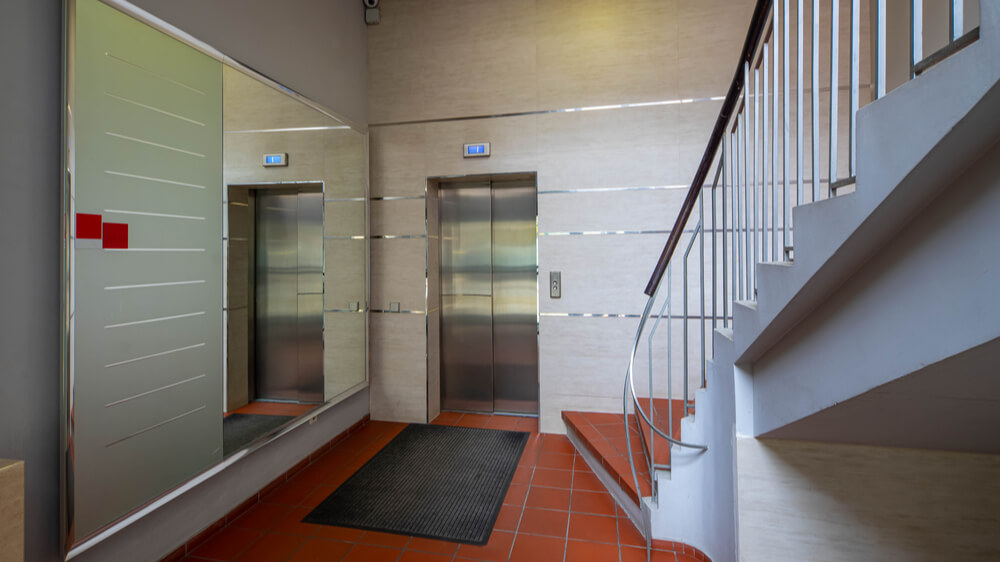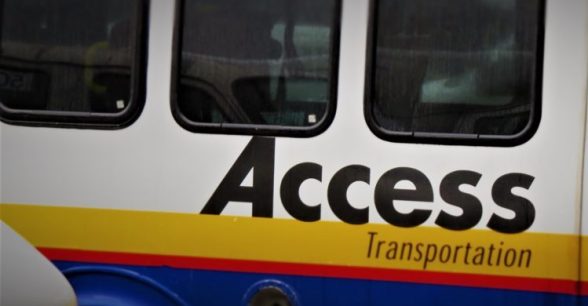Accessible Housing is Healthcare. It Could Have Prevented My Hospital Readmission.
When my friend’s car pulled up to the front door of the hospital, I wanted to feel giddy with relief that I was finally heading home. Instead, my head spun with fatigue and vertigo. My body felt weak and my legs heavy. I kept my eyes closed the entire ride back to my nine-story apartment complex.
When we arrived in the parking lot in front of my building, I sat for several minutes in the car, trying to collect my energy. I had mentioned to my hospital care team that returning home from my six days inpatient would be a challenge; there was an issue with my apartment’s elevator, which meant to get to my room, I’d have to climb a flight of stairs.
On April 11, 1968, the Fair Housing Act was passed, which prohibited discrimination on the basis of race, color, national origin, religion, sex, familial status, and disability. In 1988, amendments were added to the Fair Housing Act that required certain “multifamily dwellings” be accessible to people with disabilities. This meant buildings had to meet certain requirements, like have doors wide enough for people in wheelchairs to get through, or have light switches, electrical outlets, and thermostats in accessible locations. If an apartment had an elevator, then the elevator needed to reach all floors. However, these requirements only applied to buildings constructed after March 13, 1991. My apartment complex, one of the few affordable ones in downtown Madison, was built in 1968. Its elevator, for reasons still unclear to me, did not start on the first floor, but on the second. This meant in order to get to my third-floor unit, I had to climb at least one flight of stairs.
As I slowly got out of the car that afternoon, my head throbbed in the summer heat. I took slow steps through the parking lot to the front doors of my building. In the stairway, I put one foot on the first step and pushed upward. My leg shook. I put my other foot on the second step and pushed upward. My leg buckled. I gripped the railing, but both legs went out from under me. I slid down onto the ground, my calf muscles tremoring with fatigue.
The 911 call led to a long night in the emergency department. Shortly after midnight, a doctor readmitted me to the hospital again because I was too weak to be discharged home. For the next three days, I remained an inpatient. When my attempts to climb the stairs with physical therapy repeatedly failed, the doctor who’d treated me during my first admission suggested I be discharged from the hospital to a nursing home.
It has been nearly a year since these two admissions to the hospital. However, the experience of being ignored by my care team, who refused first to listen to my concerns about the flight of stairs I’d have to climb to reach my apartment, the resultant readmission to the hospital, and the suggestion I be discharged to a nursing home during a pandemic, deeply impacted me.
I feel angry that my care team did not listen to my concerns about climbing the stairs to my apartment, and that anger is only amplified when I think about how my doctor suggested a nursing home as a solution to a problem a working elevator could have resolved. At the same time, I can reflect on how the doctor’s suggestion was a product of an ableist world and a city that is almost completely devoid of accessible housing solutions for people like me who have no family support.
In Madison, where I live, 67.2% renters making less than 30% of the area median income (AMI) spend more than 50% of their income on rent. 13.5% of renters making between 30% and 50% of AMI spend more than 50% of their income on rent. This means people who already have few means are struggling to find affordable housing. Even fewer of those affordable units are fully accessible. Further, the process of obtaining access to accessible housing is in itself a barrier. For example, Wisconsin programs that do exist to help disabled people find accessible housing, like Movin’ Out, require renters who use their program be able to also qualify for long-term care.
In the midst of the current COVID19 pandemic, “Housing is Healthcare” has been a mantra that has run through some medical and social justice communities to recognize the critical necessity that safe, stable, housing provides to individual wellbeing and public health. This mantra has identified housing as a basic human right that provides health through the stability of shelter. People without housing die an average of 12 years earlier than the average U.S. population. Housing prevents people like me, with chronic medical conditions, from seeing their conditions worsen. Additionally, amidst a pandemic, there has been a larger recognition of how housing protects not just individuals, but whole communities, from the spread of infectious disease. For example, in recognition of the benefits that housing provides for public health during a pandemic, the CDC has mandated state governments put in place eviction moratoriums. Even so, discussions about housing as healthcare rarely ever discuss the accessibility of the housing itself as just as critical to wellbeing.
People like me who have struggled in the past to even obtain housing are supposed to feel grateful for anything we get. Even if those conditions are less than ideal, the assumption is that inaccessible or unsafe housing is better than nothing at all. However, inaccessible or unsafe housing can be a risk factor for health crisis and institutionalization just like homelessness can be. Our communities need to work better to create more affordable and accessible solutions for disabled people like myself to live safely in our communities.
About Rooted In Rights
Rooted in Rights exists to amplify the perspectives of the disability community. Blog posts and storyteller videos that we publish and content we re-share on social media do not necessarily reflect the opinions or values of Rooted in Rights nor indicate an endorsement of a program or service by Rooted in Rights. We respect and aim to reflect the diversity of opinions and experiences of the disability community. Rooted in Rights seeks to highlight discussions, not direct them. Learn more about Rooted In Rights




I agree with your urging for the need for more accessible and low-income housing! A Actually, affordable housing has income criteria much higher than anyone living on Supplemental Security Income or other disability benefits can afford. Most Building Associations fight against the provision of accessibility so only a tiny percentage of housing is a accessible and doesn’t include roll-in showers!